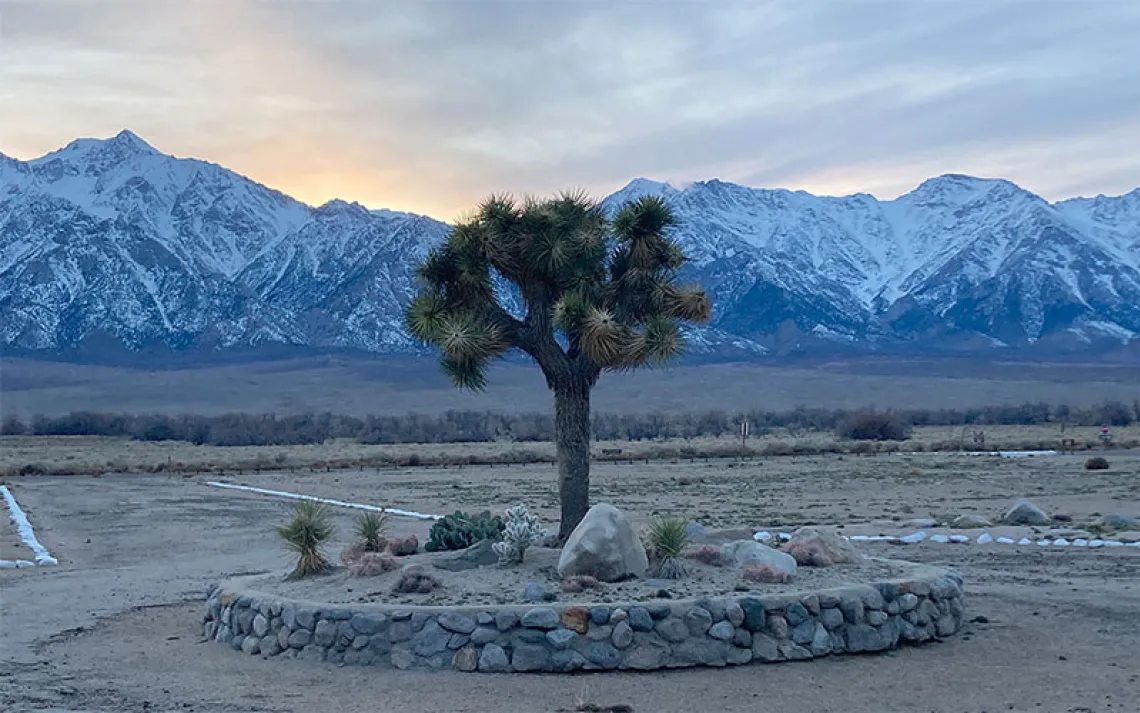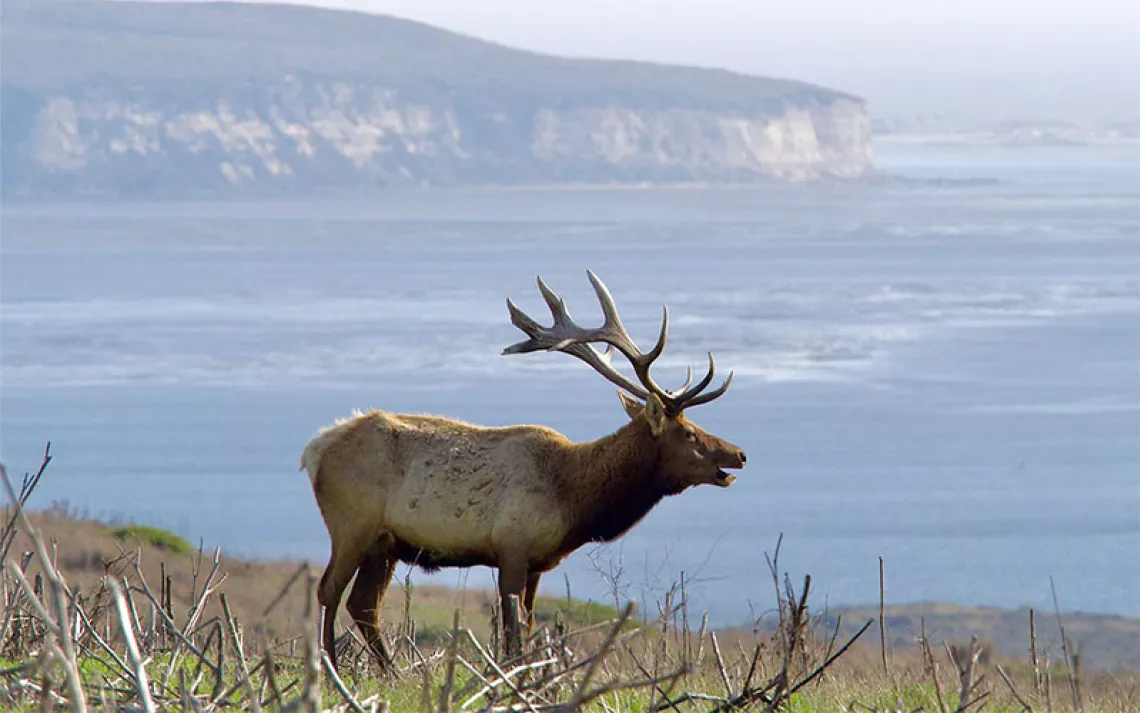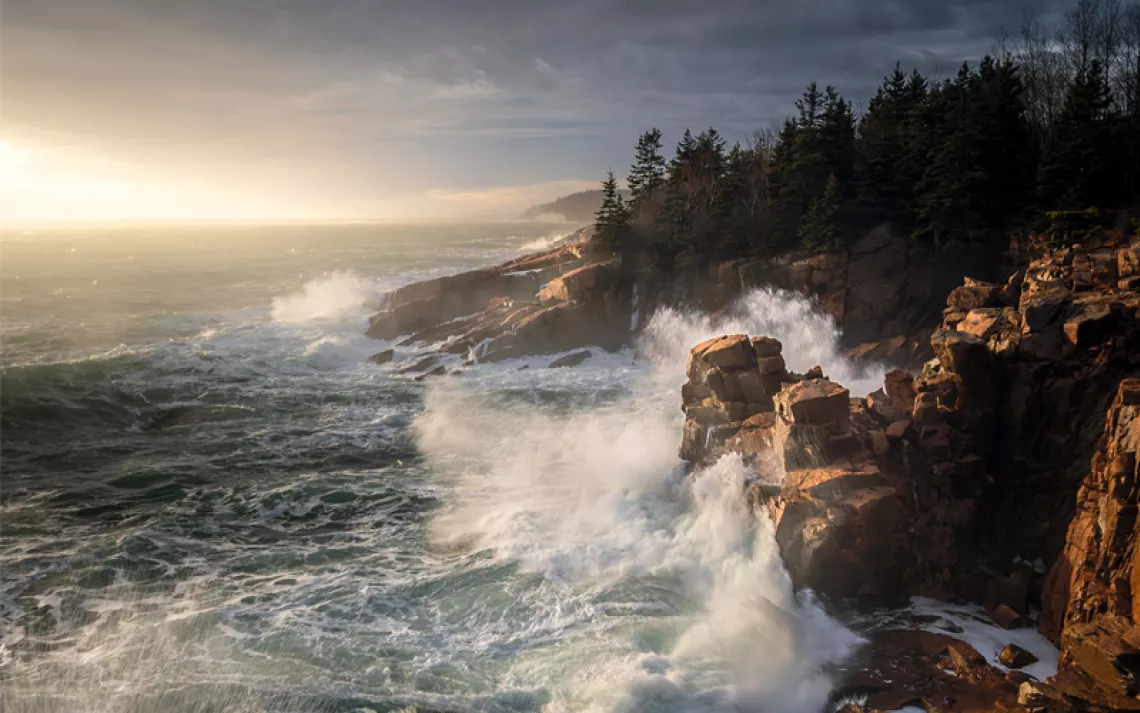The Fashion Executives Who Saved a Patagonian Paradise
Tompkins Conservation donations are the largest act of wildlands philanthropy in history
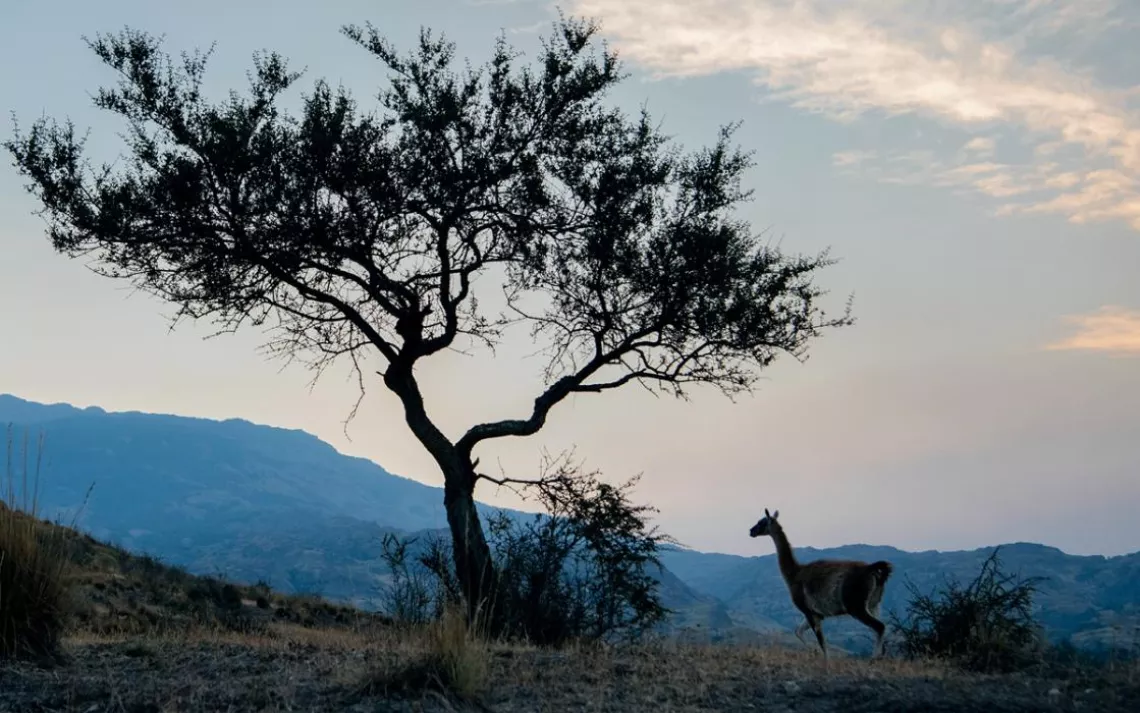
THE MINISTER of public lands was about to arrive, a television crew in tow, so everything had to be just right. It was 8:15 on a summer morning in February, and the office of Tompkins Conservation outside the Chilean hamlet of El Amarillo was hive-busy. The philanthropy's controller was hunched over a laptop filled with spreadsheets. A supervisor was giving orders to groups of men in blue coveralls. Kristine McDivitt Tompkins, the organization's president, sat at a conference table toggling between a pair of laptops and her cellphone.
For 20 years, Tompkins worked at the outdoor-clothing company Patagonia, where she became the CEO and transformed the outfit from the backyard start-up of adventurer Yvon Chouinard into a global fashion icon. Tompkins, 69, has stayed brand loyal—she was wearing a Patagonia heather-colored fleece and red puffy jacket with bits of down poking out of a hole near the right pocket. Bowls of organic almonds and blueberries were scattered about the office, leftovers from a meeting that had taken place the day before with staff from the National Geographic Society. Outside the window stretched a postcard view of Pumalín Park: unbroken temperate rainforest climbing toward the glacier-shielded summit of the Michinmahuida volcano.
One year earlier, Tompkins and then—Chilean president Michelle Bachelet had announced an agreement under which Tompkins Conservation would donate to the Chilean government the vast swaths of land acquired by the philanthropy over the course of 25 years—and the government would, for its part, put 9 million acres of southern Chile under new protection, in the process creating five national parks and expanding three others. Now, Tompkins and her staff were racing to wrap up the final details of the deal in advance of the agreed-upon handover on April 30, 2019. The meeting with the lands minister had been scheduled to introduce him to Pumalín Park, which he had never visited but which would soon be his to manage.

In just two months, the table that Kris Tompkins and I were sitting at would be the property of the Chilean people. So would the carved panels of foxes and pumas adorning the room and the framed landscape photographs and the wood-burning stove Tompkins was now stoking. The donation to the government of Chile would also include, among other things, 15 habitable buildings, 11 outbuildings such as barns, four trucks, five dozen chainsaws, 200 shovels, one museum, a fully equipped restaurant, 740 works of fine art, and 16 telephones. Then there were the roughly 725,000 acres to establish Pumalín National Park and another 206,000 acres to create Patagonia National Park in the remote south of the country.

A brown southern caracara
Combined with earlier gifts—Corcovado and Yendegaia National Parks in Chile; Monte León, Perito Moreno, and Iberá National Parks on the Argentine side of the Andes—the Tompkins Conservation donations in South America mark the largest act of wildlands philanthropy in history. Altogether, Tompkins Conservation and its partners have given away an area larger than the state of Delaware. Never before has a private organization donated fully functioning parks of such scale to national governments.
Tompkins was high off the accomplishment. "I'm still truly beaming inside that we were able to pull it off," she told me. She also admitted to being exhausted from overseeing the myriad technicalities of the handover, including a complex, eight-part agreement governing everything from land use to wildlife conservation. "Oh my goodness, as I say, I don't know that I would have the strength to do it again. It took everything off our hides."
The overtime endeavor had been her response to the unexpected death of her husband, Doug Tompkins, in December 2015. Doug, founder of the outdoor-gear company the North Face and a cofounder of the clothing brand Esprit, had been on a kayaking trip on a Patagonian lake with Chouinard and other pals when his boat capsized and he succumbed to hypothermia. Kris said that losing Doug was like "an amputation." After his death, her instinct was to fulfill their shared vision of donating the properties they had amassed during their marriage. "A week or 10 days after Doug died, I decided to pick it up and just go for it," she said.
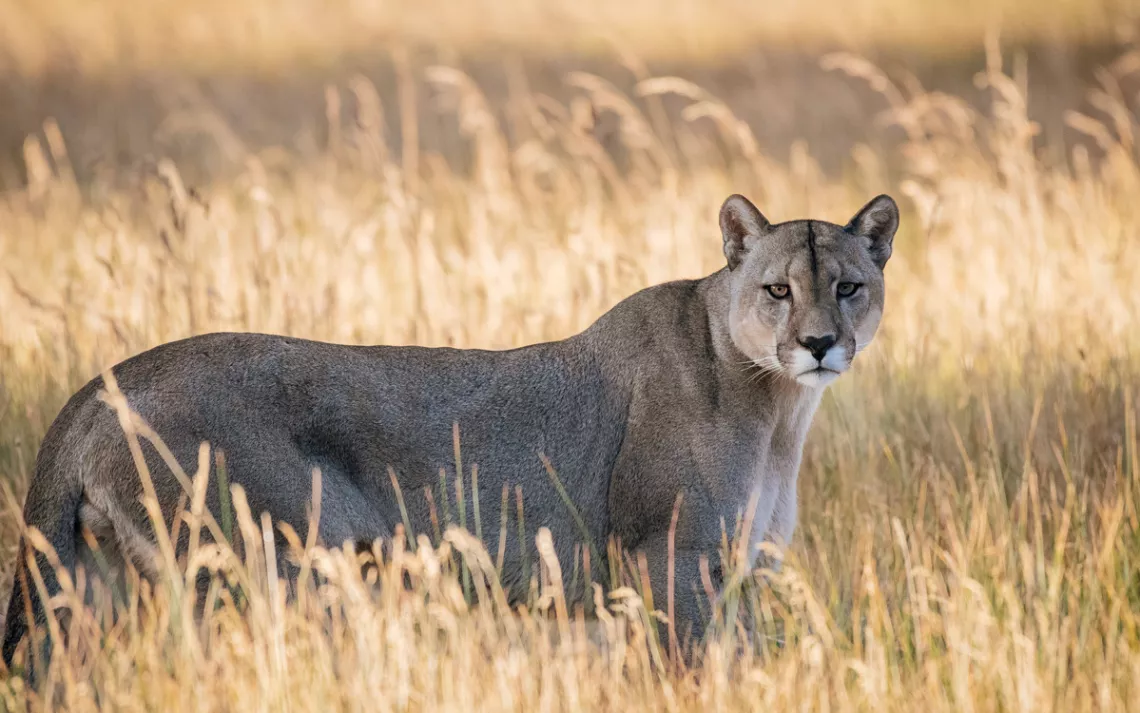
A Puma
Before meeting Kris, I had talked to many people in the Tompkins orbit—friends, colleagues, employees, former employees—and nearly everybody told me that the land transfer likely wouldn't have happened had Doug not died. He had been the more visionary of the couple, a kind of Paul Revere warning about the pathologies of capitalism and buying up as much land as possible to help stave off the sixth mass extinction. He was also, by all accounts, an irascible perfectionist who didn't suffer fools gladly; neither diplomacy nor patience came easily to him. Kris is a different sort: warm, empathic, a natural collaborator. During our short time together, she was unfailingly kind to her employees, asking about their kids by name in excellent Spanish. "The secret to Doug's success is Kris," one longtime Tompkins employee told me.
I floated the counterfactual to Kris: Would the deal have been accomplished without Doug's untimely death?
"That's a ridiculous question," she responded. She must have seen me flinch, because she softened her tone. "I ask it myself; that's why I can call it ridiculous. . . . Do I think that the death of Doug and the loss of Doug within Chile was an emotional factor? Yeah, I don't see how we can call it anything but that. I don't think Doug could have imagined we would ever get all the aspects of that proposal through."
She continued, "Let's put it this way: Maybe it wouldn't have happened quite so fast, but it never would have happened at all—I mean, not one percent of it—without Doug."
DOUGLAS RAINSFORD TOMPKINS had his anti-capitalist epiphany at just the right time—after he was already fabulously rich.
He grew up comfortable in New York's Hudson Valley, where his father owned an antique shop and his mother was an interior decorator. After getting kicked out of a Connecticut prep school, he bummed around the West, mountain climbing and ski racing. In 1964, he and his first wife, Susie, opened the North Face in San Francisco. The pair soon sold the company for a quick $50,000. Most of the profits went toward Susie's apparel business, which would eventually become Esprit; the rest of the money funded Tompkins's months-long adventure road trip through South America with Chouinard and a band of guys who dubbed themselves the "fun hogs." The trip culminated in a difficult ascent, the third ever, of the southern Andes' Mt. Fitz Roy (the massif, named after the captain of Darwin's HMS Beagle, is the peak on the Patagonia clothing label). The experience cemented Tompkins's bond to the melodramatic landscapes of Patagonia—a place neither province nor nation but a kind of imagined geography straddling Argentina and Chile.

A guanaco
By the 1980s, Doug and Susie Tompkins had built Esprit into a global fashion powerhouse on par with Guess and Gap. Tompkins—a small man with big features who could pack a room with his personality—was known as an exacting but generous CEO. "No Detail Is Small," read a sign behind his desk. Employees could receive company reimbursement for going to the symphony or a museum.
Then the Reagan-era tastemaker had a midlife crisis. He and Susie divorced, and, at the height of Esprit's success, he sold his stake in the company for an estimated $150 million. He moved to Chile and bought a ramshackle sheepherder's cottage on an isolated fjord in the Valdivian rainforest. The high school dropout deepened his self-education in the environmental canon and became enamored with the ideas of Arne Næss, the Norwegian mountain climber and philosopher who had developed a system of environmental ethics called deep ecology. "I left that world of making stuff that nobody really needed because I realized that all of this needless overconsumption is one of the driving forces of the extinction crisis, the mother of all crises," Tompkins would later say.
Determined to atone for his capitalist past, Tompkins began to buy up properties for conservation purposes, his way of "paying my rent for living on the planet," as he often said, borrowing a line from David Brower, the Sierra Club's first executive director. Peter Buckley, a friend of Tompkins's since the 1960s who was the CEO of Esprit-Europe, remembers visiting him in the early '90s and flying around southern Chile in Tompkins's six-seat Cessna 206. Tompkins was like "some sort of demented real estate guy," Buckley recalled. "He was, you know, 'Look at that. Isn't that beautiful?' And I went, 'Yeah, it's stunning.' And he would go, 'That's for sale. We could buy this. We could buy that.'"

A Magellanic woodpecker
It was a buyer's market. During the dictatorship of Augusto Pinochet, international land speculators had gotten title to huge chunks of land that they were using for absentee logging and cattle ranching. With Pinochet out of power and the political currents shifting, they were eager to sell. "He was very much in his deep ecology phase," Buckley remembered. "He said, 'These lands are for nature. I'm just buying these lands for nature. They're not for people.'"
In 1993, Tompkins married Kris McDivitt, a petite brunette who had grown up on a ranch in Santa Paula, California, and had recently left her CEO post at Patagonia. Kris joined Doug in Chile just as the land acquisitions were arousing suspicions among Chileans. Here were a pair of rich gringos who had cut the nation in half (Chile is a shoelace of a country, and at one point the Tompkinses' holdings stretched from the Argentine border to the Pacific Ocean). Yet they had no interest in cutting down the trees. To Chileans accustomed to international investors extracting the country's resources, it didn't make sense.
The suspicions metastasized into conspiracy theories. Wild rumors began circulating in the Chilean media. Some people said that the Tompkinses were going to remove cattle from the land and introduce American bison. Others said that the land was going to be used as a nuclear waste dump, or a secret US nuclear base, or a Zionist colony.
Looking back, Kris acknowledges that she and Doug could have "done some things differently." But she maintains that a degree of controversy was unavoidable. "Anytime something new happens and you can't understand it, you therefore don't trust it. Therefore you have suspicion, and therefore you have rejection," she said.
Dago Guzmán agrees that the Tompkinses' project was bound to be contentious. Guzmán met the couple in the late 1990s, when he wrote about their work for his master's thesis at the Pontifical Catholic University of Chile. He had started out skeptical. "There were all these stories about this mysterious project that was going to take possession of the lands and waters of Chile," he told me. But upon arriving in Pumalín, he found himself fascinated by the project, and he ended up working with Tompkins Conservation for the next 16 years. When I met him, he was acting as the superintendent of Patagonia Park. "Probably if the Tompkinses had entered Chile with a great clothing brand to make money, nobody would have said anything and they could have bought the same land," Guzmán told me. "But to have a project with private investment for public benefit? That's a rare thing, and people didn't understand it."
In the early 2000s, Tompkins Conservation started to focus on creating public access to its lands—building visitor amenities like trails, campgrounds, and educational signage. The work centered on what today is officially called Pumalín Douglas Tompkins National Park. The scenery there feels almost scripted: Snow-fed rivers split glacier-sculpted valleys where waterfalls spill from the rocky heights. The signature tree is the alerce, a conifer in the cypress family that is the second-most-long-lived species on Earth. Alerce groves were relentlessly logged during the 19th and 20th centuries, until the Chilean government outlawed the practice. Today, an estimated 25 percent of the alerce on Earth are in the park. During a hike through the dripping-wet forest, I visited an alerce with a redwood-like girth that had been a sapling when Rome was no more than a collection of cottages.
The Tompkinses also began endeavoring to win the goodwill of their neighbors. The couple bought up ranches and farms on the edge of the conservation lands and converted them to organic practices to produce sheep, orchard fruits, and honey. The idea, explained Tompkins Conservation staffer Rodrigo Villablanca, was to create a "buffer zone" around the park so that "people who want to continue working the land can keep working." In El Amarillo, located at the park's southern entrance, the Tompkinses launched a sweeping "beautification" campaign. To some locals, it seemed strange that an American millionaire wanted to select the trim colors on their homes; the then mayor of the adjacent town of Chaitén warned that the Tompkinses were going to seize people's houses. But many residents were open to the proposition of home improvements financed by someone else. "I would go and have maté and more maté," Villablanca told me, referring to the tea ubiquitous in Patagonia, "and try to determine what the building needed and how to help without intervening in the life of the family." More than two dozen homes in El Amarillo were refurbished.

Doug and Kris Tompkins most fully realized their vision of wildlands conservation in Chilean Patagonia’s Chacabuco Valley.
Doug was immersed in every detail, always with an eye toward creating an idealized rustic aesthetic. All the park signage was hand-carved from wood (a nice touch that park employees say is a pain when they have to change the price of anything). Even the garbage cans were works of art, each of them nestled under tidy shingles. "He'd give you a drawing, and he'd want you to build it to the height, to the dimensions, always coming up with higher standards," Villablanca recalled.
Erwin González, the superintendent of Pumalín, remembers a time when, as they were constructing a campground, Doug asked for a tree to be removed because it was blocking the view of the volcano. González procrastinated. He liked that tree—it was beautiful and home to many birds. When Doug returned to the site a few months later, he complained that the tree was still standing. He said, "How many trees has this park saved? Hundreds of thousands? Millions?" González cut down the tree.
One former employee told me that Doug was "terrifying to work for." The staff would hear the Cessna coming in for a landing, and everyone would scramble to make sure everything was perfect. Yet many employees found Doug's intensity inspiring, and they felt a clannish loyalty toward him and Kris. The Chilean staffers of Tompkins Conservation whom I met had been with the organization for 10 years, 13 years, 16 years, 19 years, 20 years, 24 years. "For Doug, nothing was impossible," Guzmán said. "He hated to hear that something was impossible. He'd say, 'OK, but at least let's try and see the result.' And look—look what we've accomplished in just a short time."

THE AYSÉN REGION of Chilean Patagonia is a place of boilerplate beauty. Sharp peaks, nearly always headlocked by clouds, drop down to arid plateaus streaked blue with copper veins, which in turn fall into valleys where the rivers run aquamarine. Lenga, a southern beech, covers the hillsides, the tree's shape reminiscent of a Lebanon cedar's zigzag posture. It's a witchy forest, every branch and limb and trunk garlanded with long strands of gray lichen. A native wild strawberry sprawls in the understory, the fruit as small as marbles and as sweet as jam.
Patagonia was the last place that humans arrived in the Americas, and it remains among the most remote locations on Earth. Europeans didn't show up in any meaningful numbers until the late 19th century, whereupon they wiped out the Indigenous people, the Tehuelche, who had lived there for millennia. Well into the 20th century, Chilean Patagonia was a kind of terrestrial island, so disconnected from the rest of the country that the authorities in Santiago worried about an Argentine takeover. To encourage settlement, in the mid-20th century the Chilean government gave away land to any pioneer who "cleaned" the forests to make way for sheep and cattle. More than 7 million acres of lenga trees were burned down. (Because the forest there is evolutionarily unaccustomed to fire, the woods didn't recover, and traveling through the region, I saw many hillsides of bleached trunks, like arboreal graveyards.) By the 1970s, there were some 20 million sheep grazing lands that were not adapted to such animals. But the settlers—mostly farmers from the Chilean heartland, along with some Germans—still numbered in the mere tens of thousands. As late as 1980, there was just one phone in Cochrane, the mountain town that is the closest human settlement to Patagonia National Park. In Patagonia, isolation endures: No jet roars or contrails interrupt the sky.
It was in the Aysén region's Chacabuco Valley that Doug and Kris Tompkins most fully realized their vision of wildlands conservation. The Chacabuco is a biodiversity treasure—a rare east-west valley bisecting the Andes—and its spring-fed meadows are locally famed for the richness of their grasses. When the Tompkinses first came to Chacabuco in the mid 1990s, the Chilean government was already eyeing it for a wildlife preserve. A Belgian ranching family, the deSmets, had owned the land since the Pinochet era, and they were running some 30,000 sheep and 6,000 cattle there. But the ranch was a money loser, and the deSmets were looking to sell. The Tompkinses bought the place in 2004.
The Chacabuco Valley and the surrounding reserves still had the full complement of their native species, and the Tompkinses set about trying to enlarge the wildlife populations through an ambitious rewilding program. "Landscape without wildlife is just scenery," Kris told me. "National parks are not an end in themselves. What we're doing is creating national parks as a strategy toward slowing down the extinction of species."

Sign up to receive Sierra News & Views
Get articles like this one sent directly to your inbox weekly.
With this action you affirm you want to receive Sierra Club communications and may vote on policy designated by the Sierra Club Board.
First, the Tompkinses sold off the livestock (slowly, so as not to warp the local agricultural economy). They then enlisted volunteers from across Chile and around the world to tear down hundreds of miles of barbed-wire fences that crisscrossed the property. Biologists were brought in to begin a breeding program for the Darwin's rhea, an ostrich-like critter, and new populations of Andean condors were released into the mountains. The Tompkinses invested in recovering the huemul, a short-legged, forest-dwelling deer that was nearly driven to extinction after European contact. Doug and Kris hired some of the former ranch hands to manage the rewilding programs. A former mountain lion hunter was tasked with puma research, and a onetime sheepherder became the "shepherd of the huemul."

The hillsides in the Aysén region are dominated by lenga, a southern beech. It's a witchy forest, every branch and limb garlanded with lichen.
"When it comes to the wildlife, this is the best that could have happened, the transformation into a park," Daniel Velasquez Romero, nicknamed the "huemul whisperer," told me. Velasquez once managed 5,000 sheep on the ranch, and he remembers when the area in and around the Chacabuco Valley was "dirt and earth" because of overgrazing. For the past 13 years, he and his wife have lived in the lenga forest southeast of the valley, tracking the huemul herds and providing key data to biologists studying the endangered deer. Though many of his family members in Cochrane don't understand what exactly he does with the huemul—or why—Velasquez said that working with the Tompkinses was one of the best things that had ever happened to him. "The forest understory, the flora and the fauna, everything has recovered so much."
The Tompkinses also set about building an elaborate visitor infrastructure. While the aesthetic at Pumalín has the vibe of a Swiss village (inspired by the shingle construction of the Germans who settled parts of southern Chile), the park buildings in the Chacabuco Valley are reminiscent of a Spanish estancia. Doug constructed a tram to transport massive rust-colored stones from a local quarry to build a restaurant, a lodge, and a visitor center. He scoured the countryside to get wood from old barns for the ceiling beams. The floors were made from tiny wood tiles, and the lampshades in the lodge's bar were plated with copper.

A guanaco
It all went largely according to plan. The tourists have come. When I visited, the campgrounds were full of Chilean families, and the bar was packed with European and North American adventurers. The animals have returned. There are an estimated 150 huemul in the park, up from 40 when the Tompkinses arrived. The Chacabuco Valley is again full of guanaco, the wild relative of the llama that once roamed the South American steppes in the tens of millions. I saw condors in the mountain passes, and in the forests I spotted plenty of Magellanic woodpeckers, endangered crow-black birds with Technicolor red heads. One morning, a male puma strode with unnerving nonchalance through the meadow where I was camped.
Similar to what had happened earlier at Pumalín, the Tompkinses' acquisitions in the Aysén region sparked blowback. Local ranchers—fearful that the livestock removal and the puma rewilding represented an attack on their way of life—staged a demonstration in 2013 after the Tompkinses demolished the former gaucho housing that had been home to as many as 40 families when the deSmets had ranched there. In the austral summer of 2018, local gauchos rallied at the park entrance with a couple of hundred cows and sheep to demand that livestock be able to graze in the Chacabuco pastures.
"The project wasn't done with the agreement of the citizens," Carlos Olivares, president of a local campesino advocacy group, told me. "They didn't take into account our culture, our work, our economy. They didn't take into account anything." Olivares's grandparents were among the first to settle the region in the 1950s, and the small hotel that he runs in Cochrane is called Sons of the Pioneers. His scorn for the Tompkinses is matched by his disdain for the central government in Santiago, which he believes has sat by idly as the ranching economy has collapsed. It's difficult for ranchers to make a living these days, he says, owing to global competition from meat producers like Australia, Brazil, and the United States. Patagonia National Park is a mistake, he believes, because it privileges wildlife over livestock. "I support parks," he told me. "But not parks on productive lands where they are going to harm cultural identity and the economic activity of the campesinos. I'm in favor of parks in those areas where it's not possible to have productive activities—in the forests of the archipelago, in the mountainous areas."

Nadine Lehner, cofounder of Chulengo Expeditions, explores the mountains on the edge of Chile's new Patagonia National Park.
Other Aysén locals share Olivares's frustrations. I spent eight days trekking in and around Patagonia National Park with an outfitter called Chulengo Expeditions, and for the first two days of the trip, a local gaucho, Miguel Reyes Muñoz, packed our food on his horses. Reyes spends his summers at a weathered mountain hut furnished with no more than an iron stove, a rawhide bed, crude wooden chairs covered in sheepskins, and an old radio that can, just barely, pick up a signal from Argentina. When we arrived, a slaughtered-and-skinned sheep was hanging from a lenga tree. Reyes admitted that he wasn't happy with the park. "Those people out there, they're tearing down fences!" he complained. "There used to be people working in that valley." But he admitted that few people in Aysén are interested in the old lifestyle; a lot of people he knows have moved away. "The young people don't want to work like this, and they don't know how to anyway. They don't have the horses, and they don't have the dogs to work the sheep and the cows." In any case, Reyes said with a shrug, "the Tompkinses bought it, so they can do what they want with it."
DOUG TOMPKINS'S FRIENDS and coworkers remember him as a lucky man, like a puma with nine lives. If they ever considered that his luck might run out, they imagined that it would happen while he was flying. Tompkins liked flouting the rules of small-craft aviation, and when he was exploring the Andes, his altimeter rarely cracked 2,000 feet. His death while kayaking on Patagonia's Lago General Carrera came as a total shock.
When people of prominence die, their lives sometimes slide into myth. In Tompkins's case, death humanized him. "In a certain manner, Doug was transformed," Guzmán told me. "Because he died fighting for what he wanted." González said that people's suspicions evaporated with Doug's demise. "When he died, people finally got it," González said. "OK, he's for real." The day after Doug died, Ricardo Lagos, Chile's president in the early 2000s, said, "I know at times his work was misunderstood. Now [Chileans] will know the greatness of what he wanted to leave this country."
By the time I arrived in Patagonia, three years after the kayaking accident, distrust of the Tompkinses had been replaced by concern about whether the government would be able to manage the new properties. The Chilean government has nothing like a national park service. Instead, its public lands are controlled by a private-public entity, the National Forest Corporation (CONAF), which is tasked with managing forestlands for profit. Many Chileans view CONAF as an unreliable steward. The government's late-2018 decision to withhold 12,000 acres from the final Patagonia National Park boundaries to make space for an Australian mining concession only increased many Chileans' suspicions of the government's intentions.
On a hike through Pumalín, I crossed paths with a middle-aged couple from the Chilean city of Los Angeles. They were awed by the scenery and the park's refined aesthetic. "This place, when I entered, I felt like I had entered another country," the wife said. "It's just marvelous here." The husband agreed and said that he was anxious about the impending handover to the government. "I know the government will screw it up, because they'll be worried about the cost or they'll go too slow," he said. "The problem is that CONAF is a corporation." He regretted having doubted the Tompkinses. "At first, I was suspicious like everyone else. I thought there was some hidden American agenda, like always. But I was mistaken. They should name an avenue in Santiago after [Doug] Tompkins."
NEAR THE LODGE in Patagonia National Park is a cemetery where some of the early settlers of the Chacabuco Valley are buried. The most recent grave is that of Doug Tompkins, 1943—2015. At the cemetery entrance is a newly constructed arch with the inscription "No hay sinonimo para Dios mas perfecto que la Belleza." It's a Spanish translation of a John Muir line: "No synonym for God is so perfect as Beauty."
It would be easy, perhaps, to see Doug Tompkins's aesthetic fanaticism—the alpine fetish and the bespoke garbage cans—as nothing more than the quirk of an eccentric multimillionaire. But for Tompkins, beauty was a political as well as personal North Star. To make—or to preserve on Earth—things of beauty was, in his view, an act of resistance against industrial capitalism. "If it is not beautiful, most likely it is not right," Doug once wrote. The handmade fences and elaborate stone houses aren't just affectations; they are a rebellion against the ugliness of the machine-made world.
"Beauty matters," Kris told me. "We are beginning to see that beauty is becoming secondary to utility and utilitarian ideas . . . and efficiency. And we say no. It's one of the cores of our work, that's for sure—beauty as a value."
Beauty, of course, is in the eye of the beholder. In Doug's own life, he went from the Italian modernism of Esprit to the gaucho's handmade maté gourd. The great stonework at Chacabuco isn't for everyone (one Cochrane resident described it to me as "grotesque"). Yet if there is any universal, intrinsic beauty to be found in this world, surely it is to be discovered in the planet's wide, wild, and naturally well-proportioned places. On this point, Tompkins liked to quote the poet Robinson Jeffers: "The greatest beauty is organic wholeness, the wholeness of life and things, the divine beauty of the universe."
After Tompkins died, his old friend Peter Buckley helped publish a monograph titled "On Beauty" in his honor. The opening flyleaf has a line that Tompkins used all the time: "If anything can save the world, I'd put my money on beauty." In the end, he did—his entire fortune. He even wagered his life on it, and left his bones in the most beautiful place his money could buy.
This article appeared in the September/October 2019 edition with the headline "The Gift."
MORE
Watch a video about the efforts to rewild Patagonia National Park: sc.org/pnp.
Read an essay by Kris Tompkins about her passion for large-scale land preservation: sc.org/kris-tompkins.
 The Magazine of The Sierra Club
The Magazine of The Sierra Club
